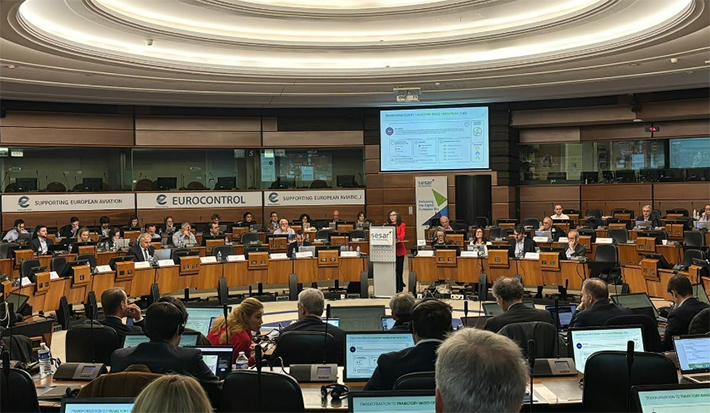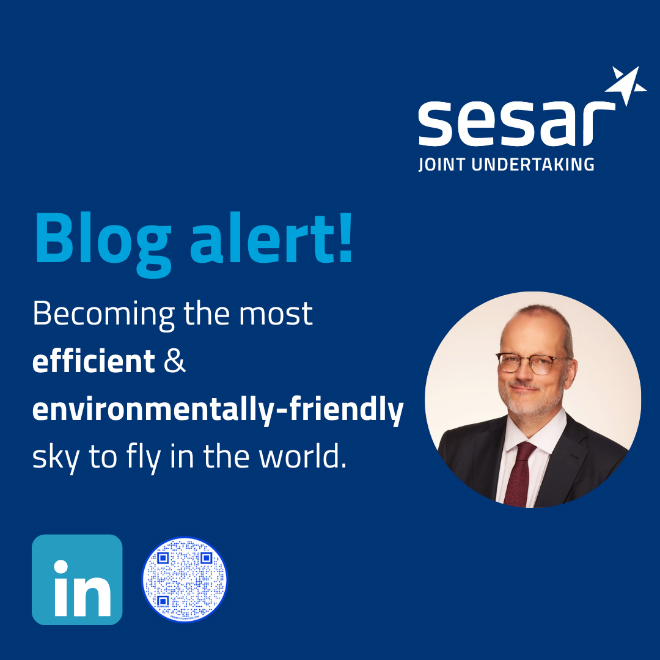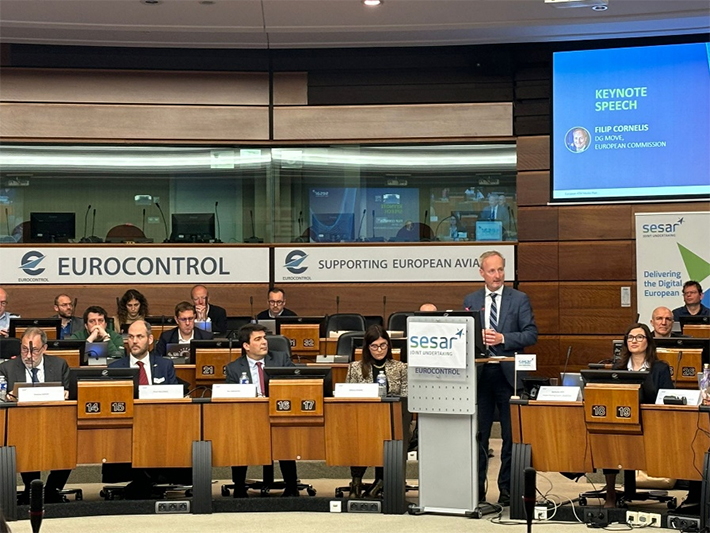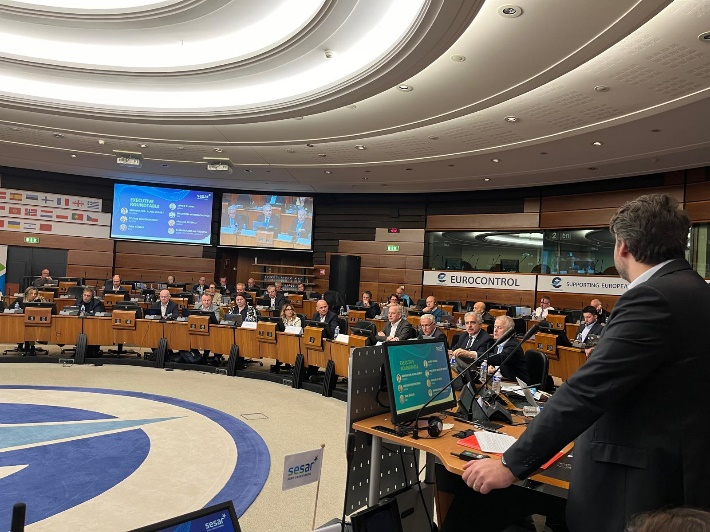
On 22-23 April, over 600 stakeholders gathered for a consultation workshop on the European ATM Master Plan update. The aim was to provide a preview of the ideas emerging from the update campaign and gauge support for some key research and deployment activities needed to make Europe the most efficient and environmentally-friendly sky to fly in the world.
 The workshop was opened by Andreas Boschen, Executive Director of the SESAR JU, and Filip Cornelis, Director for Aviation at the European Commission’s Directorate for Transport and Mobility (DG MOVE).
The workshop was opened by Andreas Boschen, Executive Director of the SESAR JU, and Filip Cornelis, Director for Aviation at the European Commission’s Directorate for Transport and Mobility (DG MOVE).
Mr Boschen invited stakeholders to express their views on the current state of preparation recalling the objective of making Europe the most efficient and environmentally friendly sky to fly in the world.
Mr Cornelis said that there were high expectations for the future strategy for ATM modernisation in Europe to address the most pressing challenges facing air traffic management, and in particular the climate crisis.
We need to be ambitious and speed up the transformation process.

The workshop featured in-depth presentations by experts on the vision and associated deployment and development priorities, as well as the roll-out of the plan and the expected benefits for the network.
During the workshop, participants submitted 182 questions and comments, which will feed into the drafting of the next version.
Over the two days, panel discussions led by Alain Siebert, Chief Technology & Strategy SESAR JU, featured the views of industry leaders representing the entire ATM ecosystem.
Summary of day 1 panel discussions
💡 Athanassios Tziolas, EASA - European Union Aviation Safety Agency, said the Plan is helping to ensure better alignment between EU policies, the regulatory framework and stakeholder needs.
💡 Vicente de Frutos Cristóbal, European Defence Agency, recalled the growing military needs for access to the airspace and underlined the importance of enablers, such as resilient CNS and cyber-secure data-sharing.
💡 Christoph Raab, Alliance for New Mobility, spoke of the clear path that the Plan provides for the integration of uncrewed aircraft into the airspace, but highlighted the need for incentivisation and encouraging investments at the level of Member States.
💡 Luc Laveyne, ACI EUROPE, welcomed the recognition of airports as hubs for smart multimodal mobility. He called for the Plan to take into account the investment realities of the stakeholders, especially given competing investments around sustainable aviation fuels, talent retention and adaptations to improve the passenger experience.
💡 Marylin Bastin, EUROCONTROL, said that addressing climate impact and climate change is not a choice but an obligation. Addressing the human factor and having a network perspective will help us address the higher levels of complexity and address social acceptance, while also bringing improvements for efficiency, capacity, environment, and safety, she added.
💡 Achim Baumann, Airlines for Europe (A4E), said that we should focus on what is necessary and not what is possible, especially on the introduction of artificial intelligence.
💡 Ulf Thibblin, CANSO, said that with the new target architecture foreseen in the new MP we can put in place the technology enablers to harvest the operational benefits much faster.

Summary of day 2 panel discussions
💡 Friedrich-Wilhelm Menge, DFS Deutsche Flugsicherung GmbH, recalled the projected increased traffic and emphasised the need to accelerate the move to trajectory-based operations, service-oriented architecture, automation and the ability to communicate more effectively data between air and ground. All of this requires a supportive regulatory framework.
💡 Hugues de Beco, Airbus, expressed his support for the strategic development and the deployment objectives, welcoming the strong focus on reducing aviation’s environmental footprint. Conditions for success will be to focus on supporting early movers, bringing on board operational staff, and maintaining collaboration and trust.
💡 Mariagrazia La Piscopia, SESAR Deployment Manager, said that the strategic deployment objectives (SDO) dealing with trajectory-based operations and CNS are going beyond what is being implemented today, which will bring even more environmental and operational efficiency. She called for a clear roll-out plan, capturing current deployment and future SDO implementation.
💡 Costas Christoforou, IFATSEA, said that safe and resilient operations will only be possible with human-machine teamwork and a recognition of all actors involved in #ATC. Make sure that frontline actors have the right tools for decision-making, facilitate change management, invest in training, recruitment and upskilling of the humans in the loop.
💡 Dirk Kügler, German Aerospace Center (DLR), called for #ATC platforms that are more modular and interconnected and for more courage when defining future exploratory research priorities.
💡 Javier Ruano, Indra, said it is time to start deploying the key enablers like trajectory-based operations network-wide, which will rely on airspace users sharing their data based on a new service oriented and cloud-based architecture.
Key takeaways
➡ If we want an ATM system that is designed to optimise every flight from an environmental perspective it will have to be an ATM system that has more capacity.
➡ That can only be achieved through an even greater focus on digitalisation and automation. The human-machine team is at the heart of it, with greater levels of #automation and an evolution in the role of the human operators.
➡ To get there, the right range of priorities have been identified covering both development and deployment
➡ Network simulations show clear benefits that #SESAR development and #deployment can bring in terms of environment, capacity, efficiency, and safety.
The results of the workshop will be used in the further development of the updated European ATM Master Plan, which is planned to be approved by the SESAR JU Governing Board at the end of 2024.
